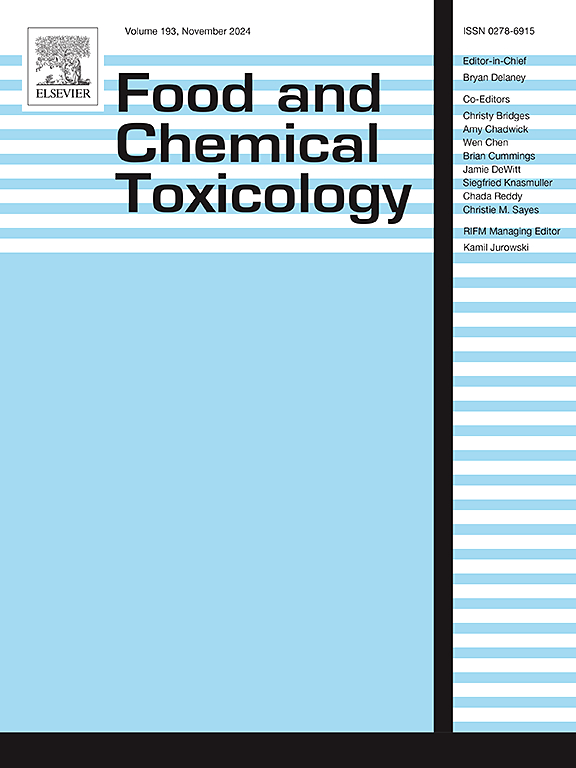Determining the cosmetics usage patterns of consumers for exposure assessment in China
IF 3.9
3区 医学
Q2 FOOD SCIENCE & TECHNOLOGY
引用次数: 0
Abstract
Accurately understanding the usage patterns of cosmetics is crucial for realistic exposure assessment. However, reference values for consumer exposure to cosmetics in China have yet to be established. A continuous survey was conducted in Guangdong Province to address this deficiency. Among 1320 potential participants, 268 men and 412 women completed the survey. The survey used a weighing method to accurately obtain the actual usage amounts of cosmetics by consumers, along with photographic documentation to ensure the accuracy and completeness of the information. Based on the participants' cosmetic usage, exposure factors for a total of 20 types of cosmetics were obtained. More than 60% of the participants reported the use of shower gel and shampoo. Face cleanser, shower gel, shampoo and conditioner were used at least once a day by ∼50% of the population. The amount of use of different cosmetics varies significantly due to individual usage habits. These data hold enlightening significance for initiating a nationwide survey on cosmetic exposure levels across China.
确定中国消费者化妆品使用模式以进行暴露评估。
准确了解化妆品的使用模式对于现实的暴露评估至关重要。然而,中国消费者接触化妆品的参考值尚未确定。为了解决这一不足,我们在广东省进行了一项持续调查。在1320名潜在参与者中,有268名男性和412名女性完成了调查。调查采用称重法准确获取消费者的化妆品实际使用量,并附有图片资料,确保信息的准确性和完整性。根据参与者的化妆品使用情况,获得了总共20种化妆品的暴露因子。超过60%的参与者报告使用沐浴露和洗发水。约50%的人每天至少使用一次洗面奶、沐浴露、洗发水和护发素。由于个人的使用习惯,不同化妆品的使用量差异很大。这些数据对于在全国范围内开展化妆品暴露水平调查具有启发意义。
本文章由计算机程序翻译,如有差异,请以英文原文为准。
求助全文
约1分钟内获得全文
求助全文
来源期刊

Food and Chemical Toxicology
工程技术-毒理学
CiteScore
10.90
自引率
4.70%
发文量
651
审稿时长
31 days
期刊介绍:
Food and Chemical Toxicology (FCT), an internationally renowned journal, that publishes original research articles and reviews on toxic effects, in animals and humans, of natural or synthetic chemicals occurring in the human environment with particular emphasis on food, drugs, and chemicals, including agricultural and industrial safety, and consumer product safety. Areas such as safety evaluation of novel foods and ingredients, biotechnologically-derived products, and nanomaterials are included in the scope of the journal. FCT also encourages submission of papers on inter-relationships between nutrition and toxicology and on in vitro techniques, particularly those fostering the 3 Rs.
The principal aim of the journal is to publish high impact, scholarly work and to serve as a multidisciplinary forum for research in toxicology. Papers submitted will be judged on the basis of scientific originality and contribution to the field, quality and subject matter. Studies should address at least one of the following:
-Adverse physiological/biochemical, or pathological changes induced by specific defined substances
-New techniques for assessing potential toxicity, including molecular biology
-Mechanisms underlying toxic phenomena
-Toxicological examinations of specific chemicals or consumer products, both those showing adverse effects and those demonstrating safety, that meet current standards of scientific acceptability.
Authors must clearly and briefly identify what novel toxic effect (s) or toxic mechanism (s) of the chemical are being reported and what their significance is in the abstract. Furthermore, sufficient doses should be included in order to provide information on NOAEL/LOAEL values.
 求助内容:
求助内容: 应助结果提醒方式:
应助结果提醒方式:


